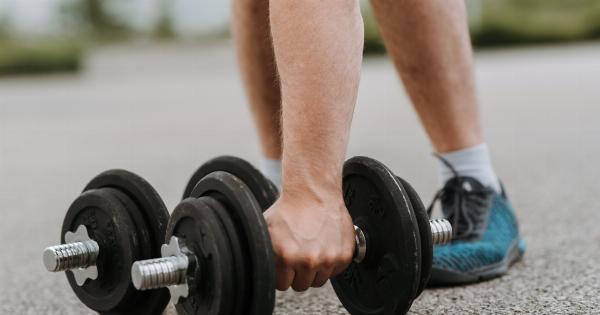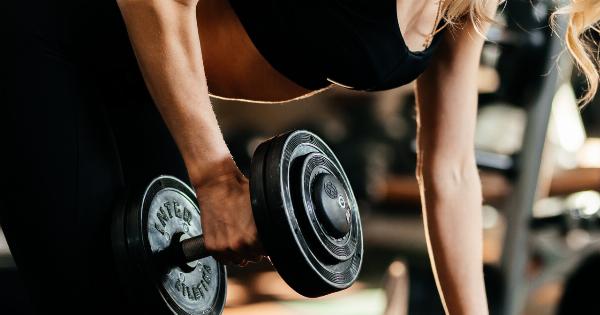Exercise is a key component of a healthy lifestyle, and it is important to find the right time to fit it into your routine for optimal results.
While there are various opinions on when the best time to exercise is, one specific question that often arises is whether it is better to exercise before or after a meal. In this article, we will delve into the science behind exercising after a meal and explore the potential benefits and drawbacks of this practice.
1. Understanding the Digestive Process
Before we discuss the best time to exercise after a meal, it is important to understand how the digestive system works. When you consume a meal, the food is broken down by enzymes and acids in the stomach.
From there, the partially digested food travels through the small intestine, where the majority of nutrient absorption takes place. Finally, any remaining waste is passed through the large intestine and eliminated from the body.
2. The Effects of Exercise on Digestion
When you engage in physical activity, blood flow increases to the muscles and away from the digestive system. This shift in blood flow can potentially disrupt the digestive process, resulting in discomfort, bloating, and even indigestion.
This is why many people prefer to wait a certain amount of time after eating before exercising.
3. Advantages of Exercising After a Meal
While exercising on an empty stomach has its own benefits, there are several advantages to exercising after a meal:.
a) Increased Energy Levels
Consuming a meal provides your body with a source of energy, in the form of carbohydrates. By exercising after a meal, you have readily available energy to fuel your workout.
This can lead to increased endurance and performance during your exercise session.
b) Enhanced Nutrient Absorption
Exercise increases blood flow to various parts of the body, including the muscles and the digestive system.
This increased blood flow can aid in the absorption of nutrients from your meal, allowing your body to make the most of the vitamins, minerals, and other beneficial compounds in the food you consume.
c) Reduced Post-Meal Blood Sugar Spikes
After a meal, blood sugar levels typically rise due to the digestion and absorption of carbohydrates. Engaging in exercise after eating can help regulate these blood sugar spikes by utilizing the glucose for energy.
This can be particularly beneficial for individuals with diabetes or those trying to manage their blood sugar levels.
d) Improved Recovery
Exercise triggers the release of endorphins, which are known as the body’s natural painkillers and mood boosters.
When you exercise after a meal, you not only reap the benefits of exercise but also harness the positive effects of these endorphins, potentially aiding in post-meal recovery and reducing any discomfort or bloating.
4. Considerations for Exercising After a Meal
While there are advantages to exercising after a meal, it is important to consider certain factors before incorporating this practice into your routine:.
a) Digestive Sensitivity
Everyone’s digestive system is unique, and some individuals may experience discomfort or gastrointestinal issues when exercising too soon after a meal. It is essential to listen to your body and adjust the timing of your workouts accordingly.
Aim to wait at least one to two hours after a large meal before engaging in intense exercise.
b) Type and Intensity of Exercise
The type and intensity of exercise also play a role in determining the best time to exercise after a meal. Activities that involve high-impact movements or intense cardio may be more challenging on a full stomach.
On the other hand, low-impact exercises such as yoga or walking may be better tolerated after eating.
c) Personal Goals
Ultimately, the best time to exercise after a meal depends on your personal goals. If your primary objective is weight loss, some evidence suggests that exercising on an empty stomach may promote fat burning.
However, if your aim is to improve performance or enhance muscle growth, exercising after a meal can provide the necessary energy and nutrients for optimal results.
5. Recommendations for Timing
Based on the considerations mentioned above, here are some general recommendations for timing your exercise after a meal:.
a) Small Snack Prior to Exercise
If you choose to exercise within an hour of a meal, try consuming a small snack that includes carbohydrates and protein. This can help provide a balance of nutrients and energy for your workout without causing digestive discomfort.
b) Eating a Larger Meal
If you plan on eating a larger meal before exercise, aim to wait at least one to two hours before engaging in intense physical activity. This gives your body enough time to begin digesting the food, reducing the risk of discomfort during exercise.
c) Experiment and Listen to Your Body
Ultimately, the best approach is to experiment and listen to your body. Pay attention to how you feel during and after exercise when trying out different timing strategies.
This will help you determine what works best for your individual needs and preferences.
6. Conclusion
The best time to exercise after a meal can vary depending on various factors, such as personal goals, digestive sensitivity, and the type of exercise.
Exercising after a meal can provide advantages like increased energy levels, enhanced nutrient absorption, and reduced post-meal blood sugar spikes. However, it is essential to consider individual factors, experiment, and listen to your body to find the timing that works best for you.































